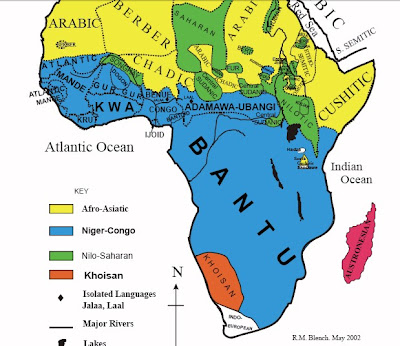Roman coins have been found as far as the Indian subcontinent clearly signifying the ancient routes of trade. pic.twitter.com/cNmyCt0ybK
— চ্যাটার্জি (@sanc_off) December 4, 2024
Personal blog that will cover my personal interests. I write about Christian Theology and Apologetics, politics, culture, science, and literature.
Thursday, December 5, 2024
Maps of Rome
Quote of the Day: Godfrey
Never forget your history, teach your kids. pic.twitter.com/KnL8n0I0qP
— Typical African (@Joe__Bassey) December 2, 2024
The Korean War
4. How close South Korea came to losing the warpic.twitter.com/4UBAuTUQkV
— Wolf of X (@tradingMaxiSL) December 4, 2024
A History Of Technological Bantu Achievements
### Summary
The video explores the technological achievements of Bantu peoples, debunking myths of their primitiveness and highlighting their innovations in agriculture, ceramics, iron production, and architecture.
### Highlights
- 🌍 African history is often misrepresented by non-Africans.
- 📜 Bantu peoples share a Proto Bantu culture and language.
- 🌱 Bantu agricultural innovations transformed marginal soils into fertile land.
- 🍶 Bantu women invented ceramic technology long before the Middle East.
- 🔥 Bantu iron smelting techniques predated European advancements.
- 🏛️ Great Zimbabwe showcases impressive Bantu architectural achievements.
- ✊ Bantu achievements challenge the notion of African backwardness.
### Key Insights
- 📖 **Myth-Busting African History**: The narrative of African primitiveness has been perpetuated through colonial writings, which modern scholarship is actively deconstructing. This helps to restore dignity to African history.
- 🌐 **Bantu Expansion**: The Bantu migration over 5,000 years led to diverse cultures and languages across Africa, showcasing the complexity and adaptability of these peoples.
- 🌾 **Agricultural Advancements**: The introduction of soil fertility techniques by Bantu farmers allowed for higher population densities, leading to the establishment of organized societies and states.
- 🍵 **Ceramic Innovations**: Bantu women were pioneers in ceramic technology, demonstrating advanced craftsmanship that predates similar developments in other regions, highlighting their cultural significance.
- 🛠️ **Iron Technology**: Bantu iron smelting capabilities surpassed those of Europe for centuries, illustrating the advanced metallurgy that contributed to their societal development.
- 🏰 **Architectural Marvels**: The construction of Great Zimbabwe and other structures reflects sophisticated architectural knowledge and skills, defying colonial views of African capabilities.
- 💡 **Reframing African Narratives**: Acknowledging Bantu achievements emphasizes the importance of recognizing Africa's contributions to global civilization, challenging longstanding stereotypes.
Film Theory: Disney's Secret Archive of Dead Actors
Forbidden Knowledge: Why Book of Jubilees Was Banned!
10 Biggest Evidence For Jesus Outside of the Bible
Summary
The video discusses ten significant non-Christian historical accounts of Jesus from various sources, affirming his existence and crucifixion.
Highlights
📜 Phallus (52 A.D.): Early secular writer noted darkness and an earthquake at Jesus’s crucifixion.
📚 Tacitus (56-120 A.D.): Historian confirmed Jesus’s crucifixion under Pontius Pilate and persecution of Christians.
🧠 Mara Bar-Serapion (70 A.D.): Described Jesus as a wise king, emphasizing his influence and persecution.
🌑 Flagon (80-240 A.D.): Mentioned the darkness at crucifixion and Jesus’s prophetic abilities.
✉️ Pliny the Younger (61-113 A.D.): Documented early Christians worshiping Jesus as God with a moral code.
🎭 Lucian of Samosata (115-200 A.D.): Satirist acknowledged the existence and worship of Jesus by Christians.
📖 Josephus (37-101 A.D.): Jewish historian depicted Jesus as a wise man and a teacher who was crucified.
Key Insights
🔍 Historical Validation: Non-Christian sources provide evidence supporting the historical existence of Jesus, highlighting his life and death.
⚖️ Multiple Perspectives: Different accounts, both hostile and favorable, contribute to a richer understanding of Jesus’s impact on history and culture.
🕊️ Cultural Relevance: The references to Jesus by various writers indicate his significant role in shaping early Christian thought and practices.
🏛️ Political Context: Accounts like Tacitus’s illustrate the socio-political tensions of the time and the scapegoating of Christians.
📖 Miracles and Teachings: Writers like Celsus acknowledged Jesus’s miraculous works, affirming his influence on followers despite criticisms.
✝️ Religious Opposition: The Jewish Talmud and the Toldot Yeshu reflect the religious conflicts of the time, showing both acknowledgment of Jesus’s existence and opposition to his claims.
🗣️ Legacy of Jesus: The survival of these accounts indicates the lasting legacy of Jesus, influencing both religious and secular discourse throughout history.
Why is Billy Carson HIDING this VIDEO from YOU ??? @WesHuff
Check out a reaction video to an online debate. Billy Carson got wrecked.
Quote of the Day: Malcolm X
"When we send our children to school, they learn nothing about us other than we used to be cotton pickers. Why, your grandfather was Nat Turner; your grandfather was Toussaint L'Ouverture; your grandfather was Hannibal. It was your grandfather's hands who forged civilization and pic.twitter.com/stMYxV5WT1
— Kentah Gwanjez (@GWANJEZ) December 16, 2024
Even Our Maps Are Racist
In the Western world the desire to make people believe that Europeans are more important and more powerful and just better than the rest of the world, especially Africa, most map projection that we see are intended to make Africa to appear smaller than it really is but make Europe, Russia, and Austrialia larger than they really are relative to other parts of the world.
Comparison of Russia and Africa 🤯 pic.twitter.com/SG2oUZm95n
— Mark Stevenson (World History) (@Xworld_historyX) December 4, 2024
How are the actual sizes of the countries?pic.twitter.com/xCFddL8npy
— চ্যাটার্জি (@sanc_off) December 4, 2024
Data Terms Explanations
Data terms explained.
— Gabby (@thenaijacarguy) December 3, 2024
Learn Data engineering here: https://t.co/e0BuqEuR0p pic.twitter.com/GkEwlg2Vc5


